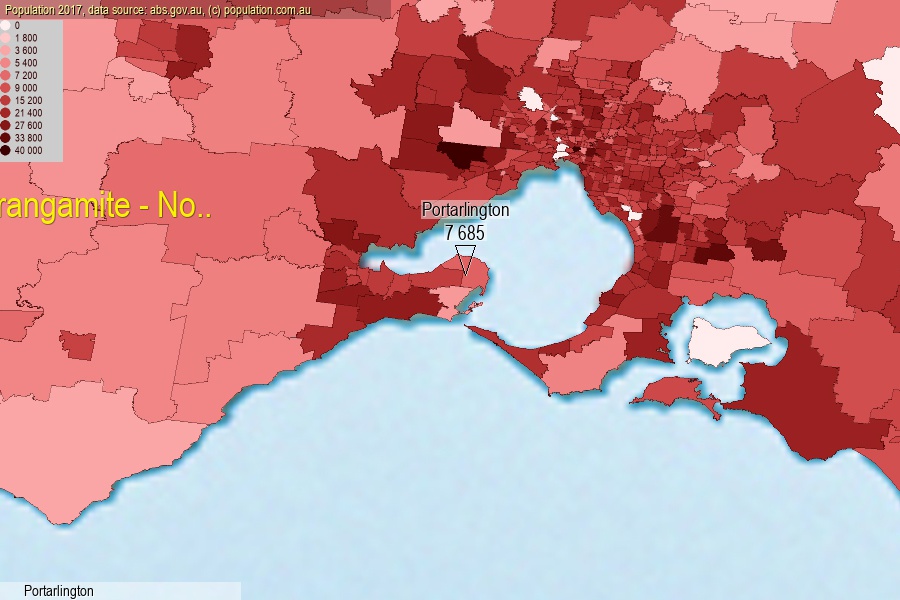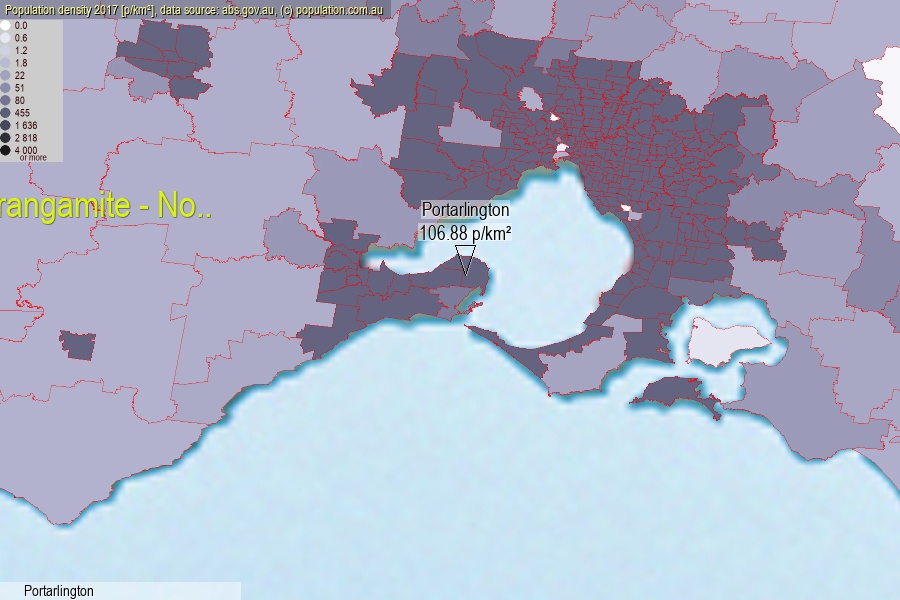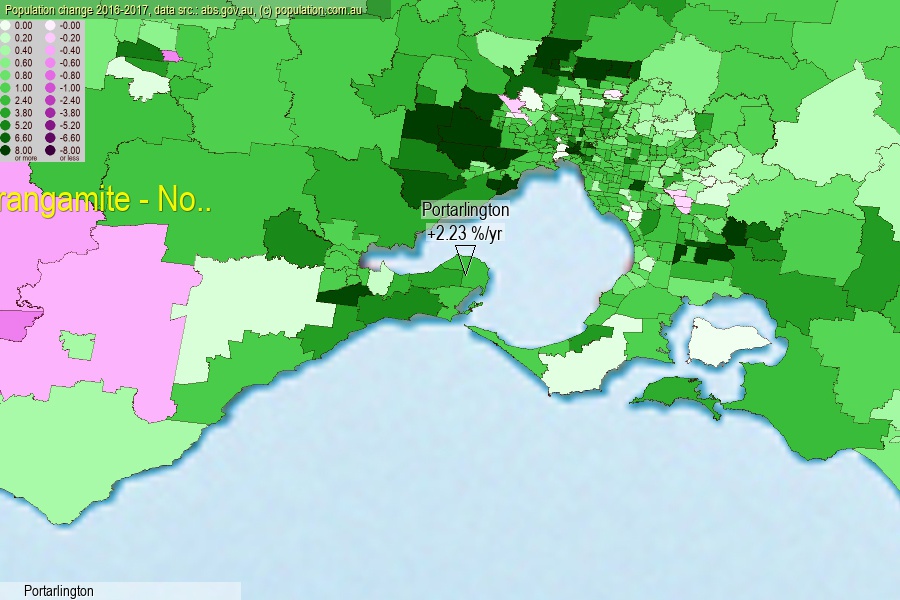 population.com.au
population.com.auLast official estimated population of Portarlington (as Statistical Area Level 2) was 7 685 people (on 2017-06-30)[2]. This was 0.03% of total Australian population and 0.12% of VIC population. Area of Portarlington is 71.90 km², in this year population density was 106.88 p/km² . If population growth rate would be same as in period 2016-2017 (+2.23%/yr), Portarlington population in 2025 would be 9 171. [0]



Click to enlarge. Portarlington is located in the center of the images.
Population [people], population density [p./km²] and population change [%/year] [2]
View borders » (new window) [4]
[1991-1992] -0.10 %/Yr.
[1992-1993] -1.16 %/Yr.
[1993-1994] -1.08 %/Yr.
[1994-1995] -0.85 %/Yr.
[1995-1996] -0.51 %/Yr.
[1996-1997] +0.39 %/Yr.
[1997-1998] +0.33 %/Yr.
[1998-1999] +1.93 %/Yr.
[1999-2000] +3.88 %/Yr.
[2000-2001] +3.32 %/Yr.
[2001-2002] +1.19 %/Yr.
[2002-2003] +1.89 %/Yr.
[2003-2004] +0.74 %/Yr.
[2004-2005] +2.09 %/Yr.
[2005-2006] -0.61 %/Yr.
[2006-2007] +3.20 %/Yr.
[2007-2008] +1.96 %/Yr.
[2008-2009] +3.48 %/Yr.
[2009-2010] +3.46 %/Yr.
[2010-2011] +3.86 %/Yr.
[2011-2012] +3.51 %/Yr.
[2012-2013] +2.35 %/Yr.
[2013-2014] +1.38 %/Yr.
[2014-2015] +1.92 %/Yr.
[2015-2016] +3.31 %/Yr.
[2016-2017] +2.23 %/Yr.
[0] Calculated with linear interpolation from officially estimated population
[1] Read more about SA2 and Australian Statistical Geography Standard (ASGS) on abs.gov.au
[2] Population data from Australian Bureau of Statistics (Population and density: 2017; change: 2016-2017)
[3] Digital Boundaries: Australian Statistical Geography Standard (ASGS) 2016.
[4] Border coordinates are simplifyed using Ramer-Douglas-Peucker algorithm.